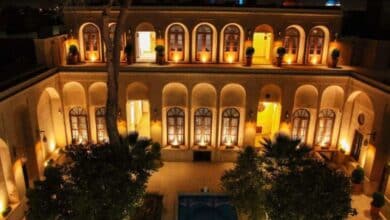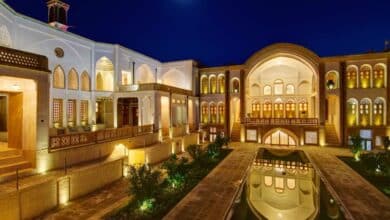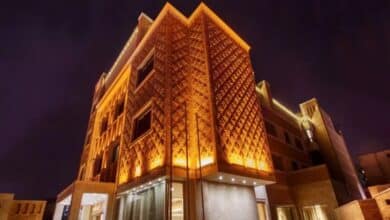Ultimate Kermanshah Travel Guide: Must-See Spots and Local Tips
Explore the Hidden Treasures of Kermanshah, Iran

Kermanshah province, bordering Iraq, is among the 31 provinces of Iran. It boasts a wealth of historical and cultural heritage, coupled with a varied geography and climate.
The region formerly referred to as Kermanshah from 1969 to 1986 and Bakhtaran from 1986 to 1995 is now recognized as the province. The city of Kermanshah, established in the 4th century CE by Bahrām IV of the Sāsānian dynasty, serves as the capital of the province.
Kermanshah boasts numerous Achaemenid and Sāsānian monuments, including the renowned rock carvings at Bīsitūn and Tāg-e Bostān. Following World War II, a significant number of Kurdish tribes migrated to urban regions, making the province their new residence.
Contents
Compulsory – Sightseeing Spots
Kermanshah province hosts many historical and cultural attractions in such a way you can’t find anywhere else!
A rich history of this city can be seen in its enchantments, but if you reach this city all the stories come true.
Remember these tourist attractions in Kermanshah:
Taq–e Bostan
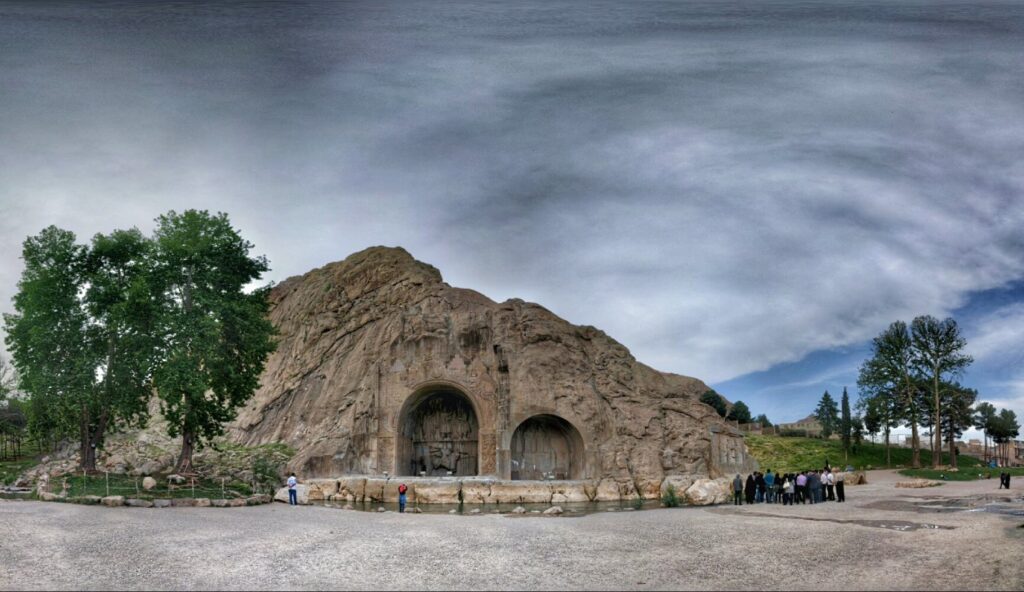
The rock carvings at Taq–e Bostan, which date back to the 3rd and 4th centuries CE, showcase the coronation, hunting, and religious scenes of the Sāsānian dynasty’s kings. Additionally, the site boasts a lake and a natural spring.
The sculptures, showcasing exceptional craftsmanship and remarkable preservation, depict the ceremonial ceremonies of Ardashir II (379–383) and Shapur III (383–388), making them some of the most exquisite examples of Persian sculpture during the Sassanid era. Similar to other symbols of the Sassanid dynasty, Taq-e Bostan, and its relief patterns emphasize themes of authority, religious devotion, prestige, the grandeur of the royal court, the spirit of competition and warfare, celebration, happiness, and jubilation.
Bisotun World Heritage Site
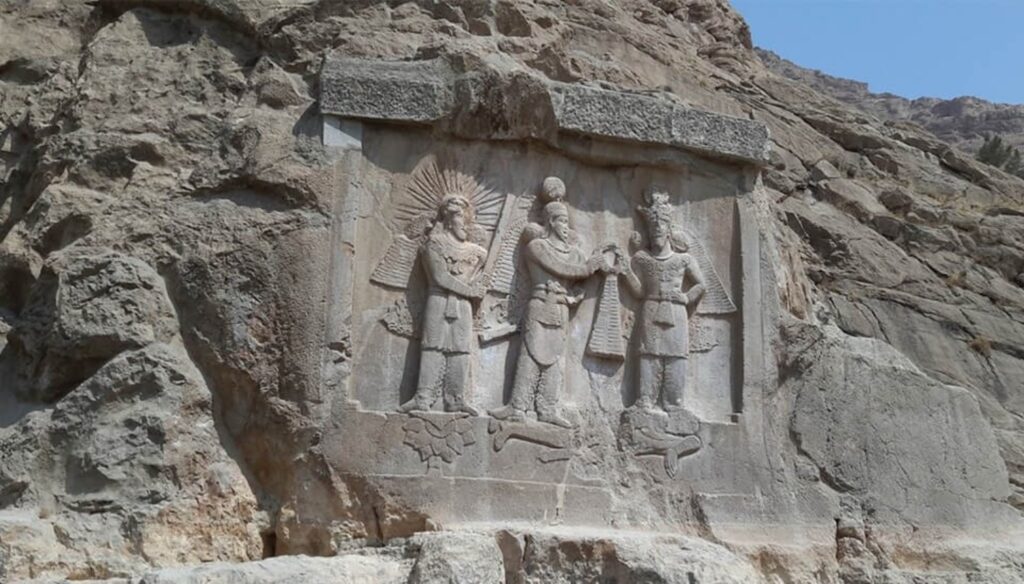
At the base of Mount Bisotun lies a collection of historic relics and engravings on a cliff, known as a complex of ancient monuments. Among them, the inscription by Darius I, the ruler of the Achaemenid Empire, is the most renowned, as it documents his triumphs and accomplishments in three languages: Old Persian, Elamite, and Babylonian. Additionally, the site features carvings from the Sāsānian and Ilkhanid eras, along with a temple and a caravanserai.
Temple of Anahita
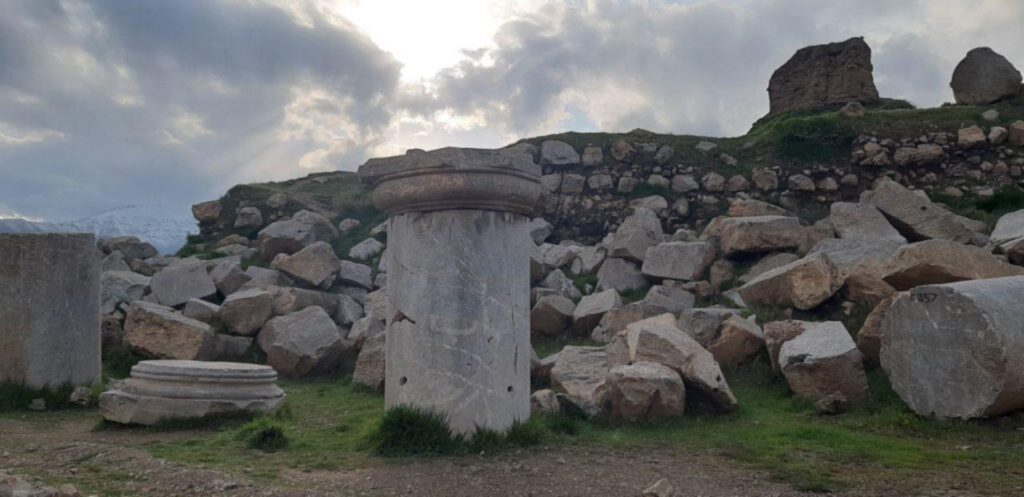
This temple, devoted to the deity of water and fertility, Anahita, was venerated by the ancient Iranians. Constructed during the 2nd century BCE under the rule of the Seleucid dynasty, it underwent subsequent renovations by the Parthians and the Sāsānians. Featuring a rectangular layout adorned with four towers positioned at each corner, the temple also boasts a sizable central pool.
Kuhestan Park
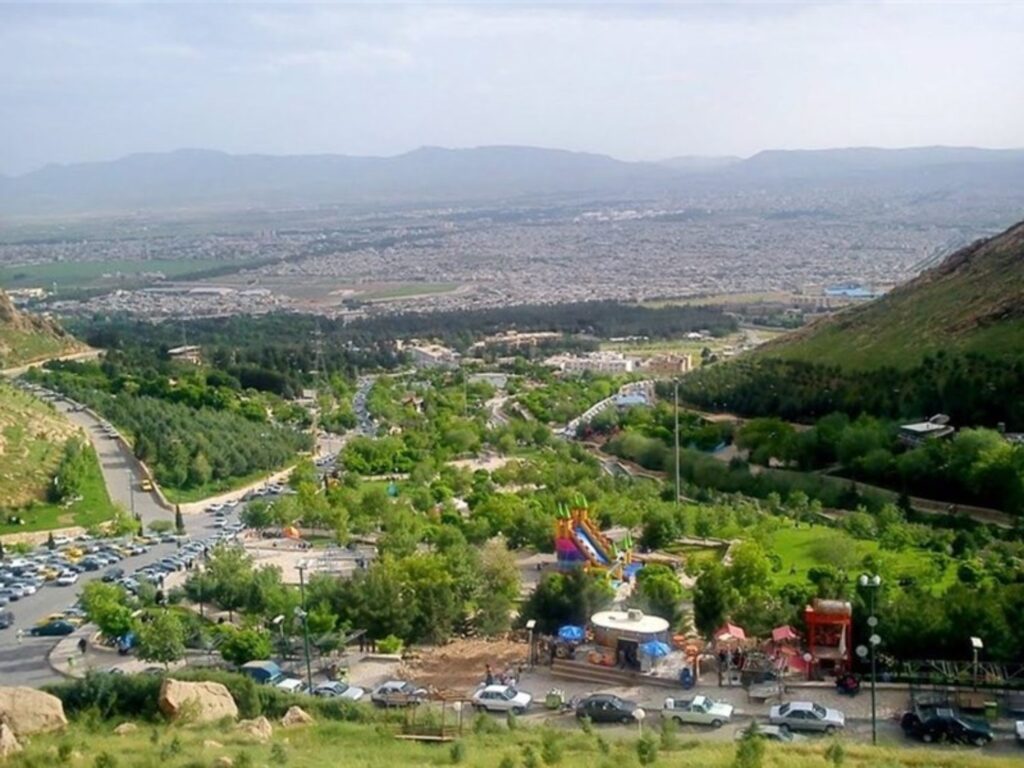
Situated in the northern part of Kermanshah, Kohestan Park is renowned for being one of the biggest parks in the city. Visitors can enjoy the park’s highlights such as the two man-made waterfalls, the memorial dedicated to the unknown martyrs, lush green areas, and artificial fountains. Additionally, the park is equipped with a children’s playground, seating platforms, and pavilions for visitors to relax in.
Don’t Miss These Dishes In Kermanshah!
The culinary culture of Kermanshah, a province located in western Iran, is known for its richness and diversity. The traditional cuisine of this region is a reflection of its history, geography, and the lifestyle of its predominantly Kurdish population. Kermanshah boasts of several delectable dishes that are famous for their unique flavors and taste.
Dande Kebab
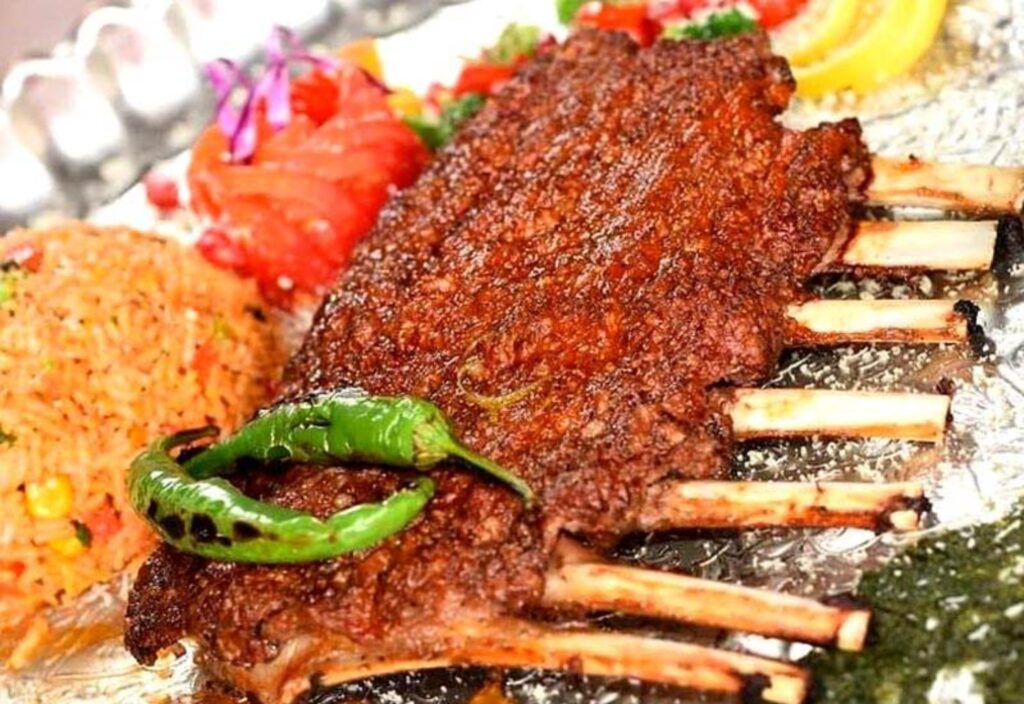
A unique variation of lamb ribs kebab is cooked on a charcoal grill and marinated with a delectable blend of tomato paste, lemon juice, saffron, salt, and pepper. This exquisite dish is traditionally accompanied by rice or bread, onion, and sour orange. Originating from Kermanshah, Dande Kebab holds a significant place as an authentic and ceremonial delicacy, commonly savored during formal gatherings and joyous celebrations.
Khoresh-e Khalal
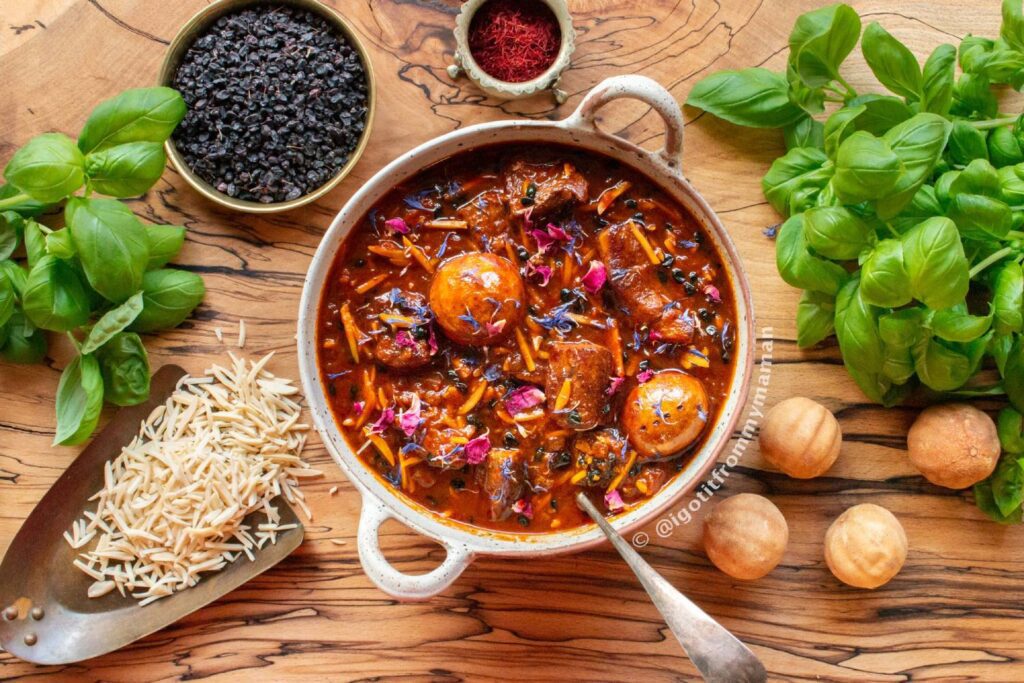
A traditional Persian dish known as Khoresh-e Khalal is a lamb meat stew that is cooked with slivered almonds, barberries, onion, tomato paste, lemon juice, saffron, salt, and pepper. This dish has a unique sweet and sour flavor and a crunchy texture. It is typically served with rice and butter and is considered a ceremonial dish commonly prepared for weddings and mourning ceremonies.
Sib Polo

Sib polo, a traditional Persian cuisine, is predominantly prepared in Kermanshah, a province known for its Kurdish influence, within Iran. This delectable dish consists of parboiled rice and a savory potato filling, which can be complemented with either minced meat or succulent chicken fillet.
Valak Polo
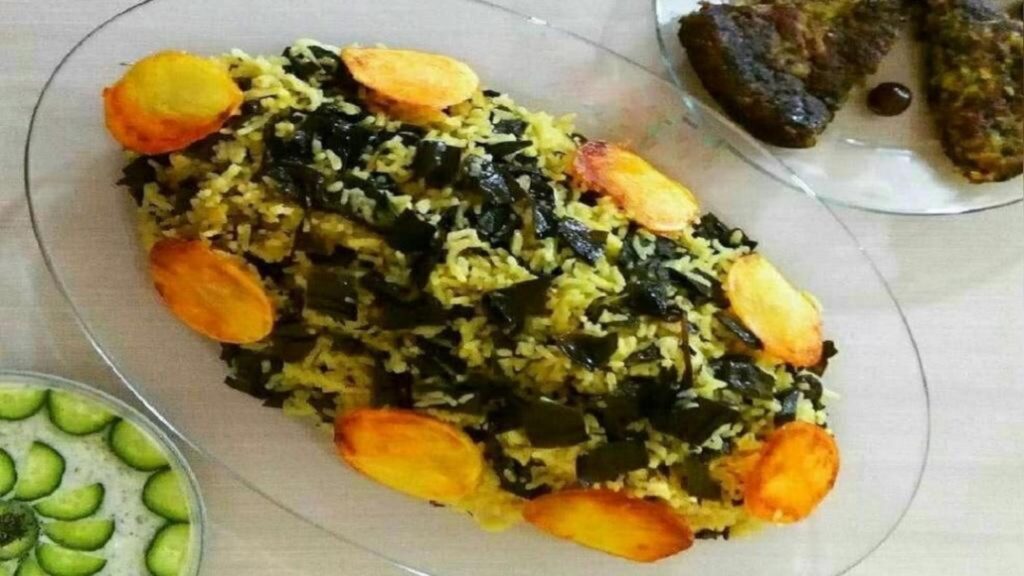
Valak Polo is a popular dish among the locals, consisting of fava beans, dill, garlic, butter, salt, and pepper cooked with rice. This flavorful dish has a vibrant green color and offers a refreshing and savory taste. It is commonly served with either lamb shank or chicken, making it a delicious and unique choice.
Ash-e Abbas Ali

Is a nourishing and comforting dish commonly prepared during winter or religious events. It is a rich soup consisting of rice, lentils, chickpeas, beans, noodles, onion, garlic, turmeric, salt, pepper, and Kashk (whey). The soup is beautifully enhanced with a garnish of mint, fried onion, and garlic.
Kookooye Paghaze

This nutritious and healthy dish, known as Kookooye Paghaze, is a vegetable omelet prepared using a combination of spinach, parsley, cilantro, dill, eggs, flour, baking powder, salt, and pepper. The omelet is cooked in oil until golden and then sliced into individual portions.
Kalaneh
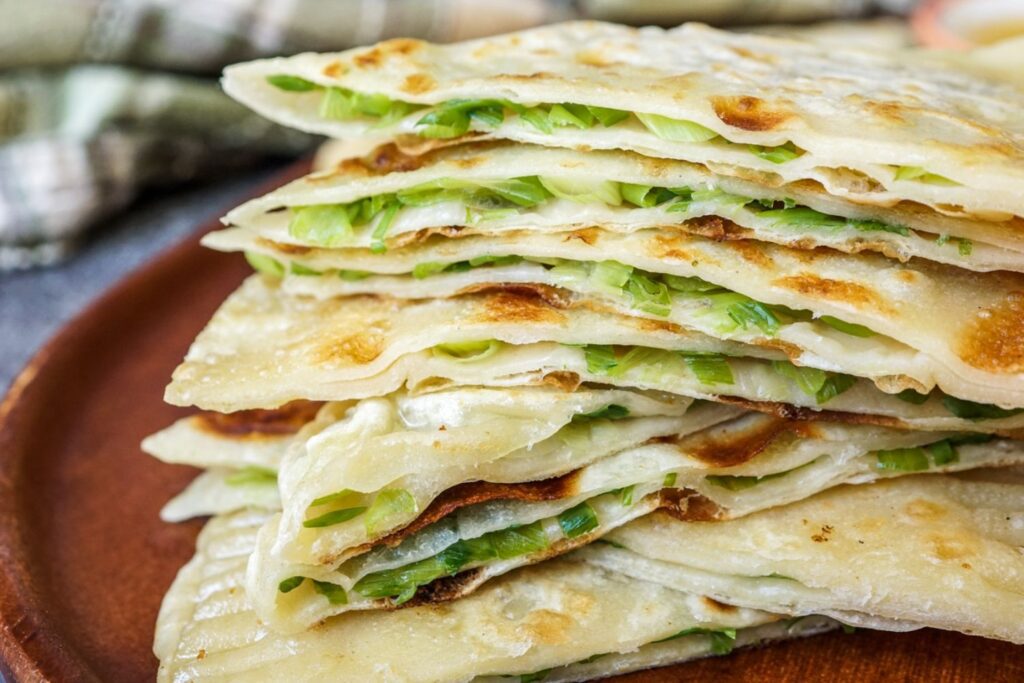
This delectable breakfast option, known as Kalaneh, is crafted from a blend of wheat flour, scallion, eggs, yogurt, salt, and baking soda. The mixture is skillfully baked in a traditional tandoor, a clay oven, resulting in savory bread. Once cooked, the bread is expertly sliced into individual portions. To enhance its taste, Kalaneh is accompanied by a selection of accompaniments such as cheese, butter, honey, or jam. This delightful and satisfying breakfast dish is adored by numerous individuals.
Kermanshah Cities
Kermanshah is the largest city and capital of the province. Despite Kermanshah city, there are some other cities which are known as an attraction and should be visited.
Eslamabad-e Gharb
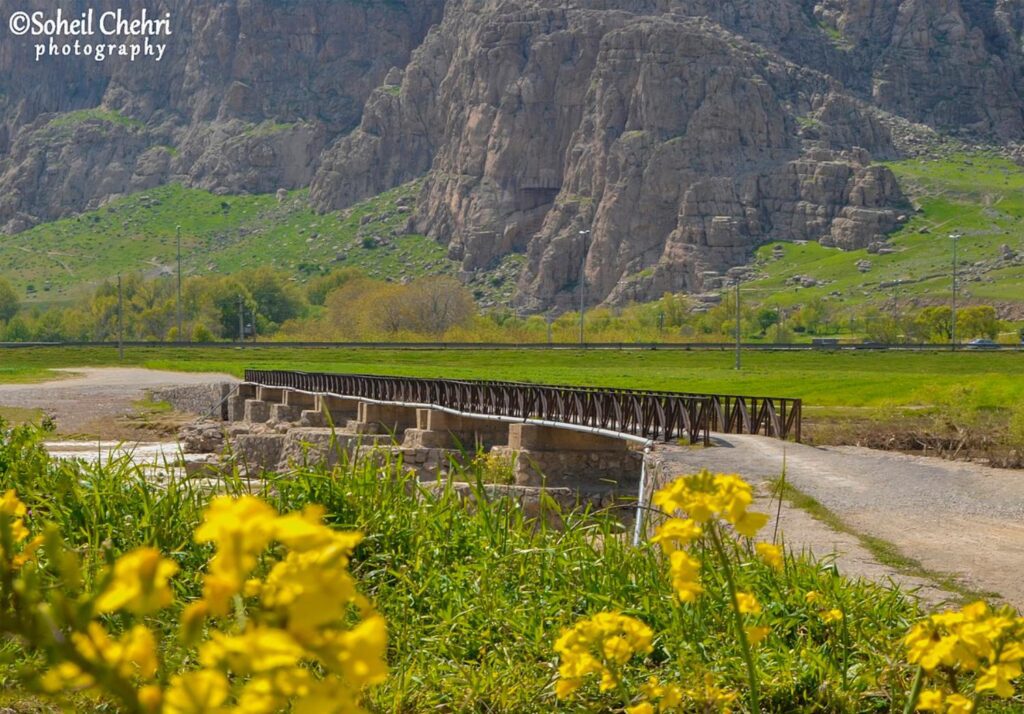
Located in the southwest of Kermanshah, this city is the second-largest in the province. With its origins dating back to the Parthian era, it has served as a significant hub for trade and commerce. The city boasts numerous natural and historical attractions, including the Chalanchulan Lake, Quri Qaleh Cave, Zarrineh Rud River, Khosrow Bridge, Sassanid Fire Temple, and Eslamabad-e Gharb Castle. Additionally, it is renowned for its agricultural products, which encompass wheat, barley, rice, and various fruits.
Paveh

This city is located in the northwest of Kermanshah, close to the Iraq border. It is situated in a mountainous area and experiences a cold and wet climate. Renowned for its picturesque landscapes and rich Kurdish culture, the city offers numerous natural and cultural attractions. These include the Zarivar Lake, Palangan Village, Paveh Museum, Paveh Bazaar, and Paveh Friday Mosque. Additionally, the city is famous for its delectable cuisine, featuring dishes like dolma, kookoo, and ash.
Qasr-e Shirin
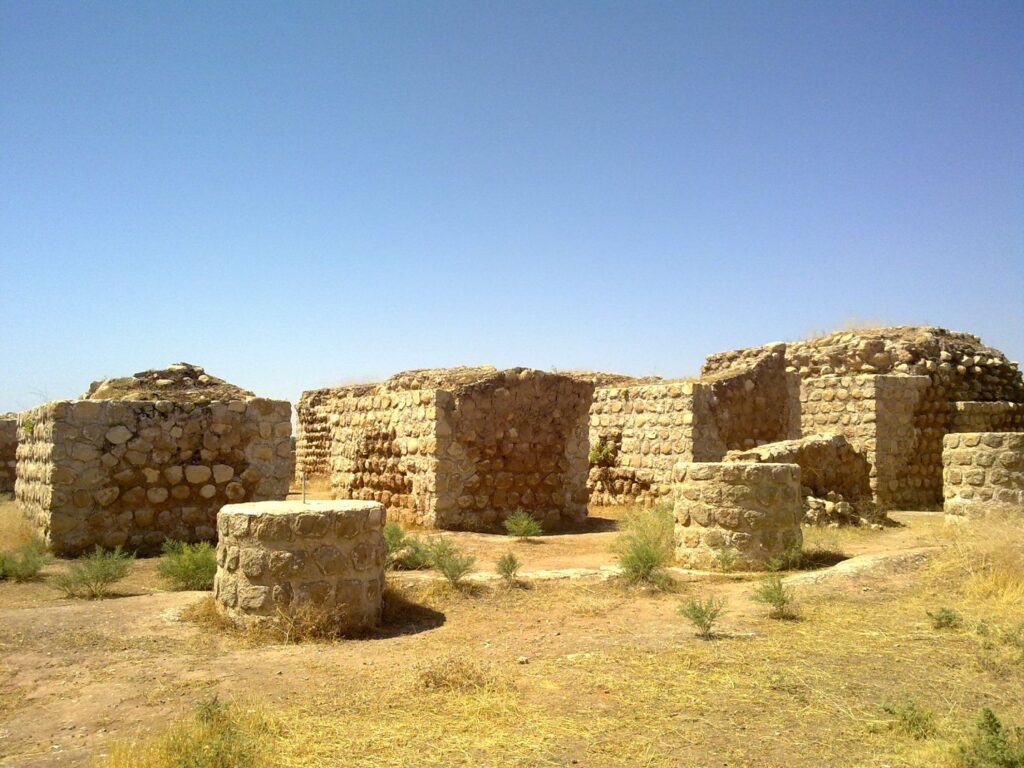
This city, located in the western region of Kermanshah near the Iraq border, was established by the Sassanid king Khosrow II during the 6th century CE. It was named after his beloved wife, Shirin. The city flourished as a magnificent and prosperous urban center, boasting grand palaces, lush gardens, and elegant fountains. However, it faced destruction during the Arab invasion in the 7th century CE. Despite these adversities, the city still retains remnants of its ancient splendor, including notable landmarks such as the Khosrow Parviz Palace, the Shirin Palace, the Anahita Temple, and the Sassanid Bridge. Additionally, the city serves as a significant trade hub facilitating commerce between Iran and Iraq.
Climate and Weather in Kermanshah
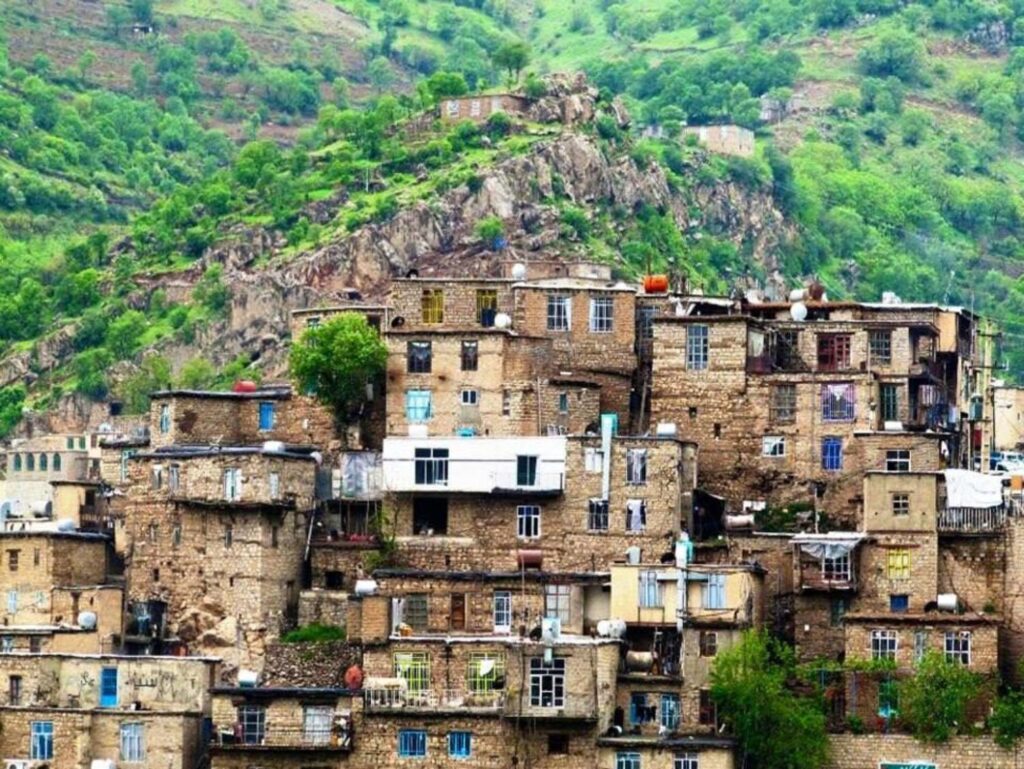
The climate and weather in Kermanshah vary across different parts of the province due to the influence of the Zagros Mountains, Mediterranean currents, and the presence of plains. However, the city of Kermanshah itself experiences a moderate mountainous climate. Its proximity to the Zagros Mountains results in a relatively cool climate. Unfortunately, in recent years, the city has faced challenges such as drought, the warming of the earth’s climate, and the arrival of fine dust from Iraq, leading to a decrease in air quality. On average, the city has an annual temperature of 14 degrees Celsius and receives 456.8 mm of rainfall per year.
Kermanshah offers different experiences throughout the year.
Spring is a great time to visit when the plains are lush and green due to rainfall.
Summer can be hot, but the city’s tree-lined boulevards provide shade for comfortable walks.
Autumn is also enjoyable with its pleasant weather and occasional rain.
Winter could be cold and rainy, but not as severe as in neighboring Kurdistan province.
Amusement in Kermanshah

There is a wide range of activities to engage in while visiting Kermanshah, extending beyond its numerous historical and natural landmarks. This city offers an abundance of must-see attractions that should not be overlooked.
Kermanshah and its surrounding mountains, particularly Mount Bistun, are renowned in Iran for their opportunities for wall climbing and rock climbing. Every year, numerous athletes from both domestic and foreign backgrounds visit this province to conquer the famous walls in this area. Among these walls, the Biston wall stands out with its impressive dimensions of 1200 meters in length and 5.5 kilometers in width. It has gained a remarkable reputation among athletes in this field and is often referred to as the rock-climbing paradise of Iran.
Kermanshah province boasts several exceptional and distinctive caves in Iran, including Parav Cave (the third deepest cave in Iran) and Qori Qala Cave (the largest underwater cave in Iran and the Middle East). Caving enthusiasts are drawn to these caves, but it demands a high level of expertise, equipment, skills, and support to explore them safely.
If you have a passion for soaring through the skies, the Weis Qarni flight site in Kermanshah province is the perfect destination to fulfill your dreams. Located in Ravansar, the Weis Qarani site is renowned as one of Iran’s top-flight locations. Here, you can partake in exhilarating activities such as paragliding, Para motoring, and free-fall flights, allowing you to experience the sheer joy of flying amidst the clouds.
Transportation in Kermanshah
Shahid Ashrafi International Airport
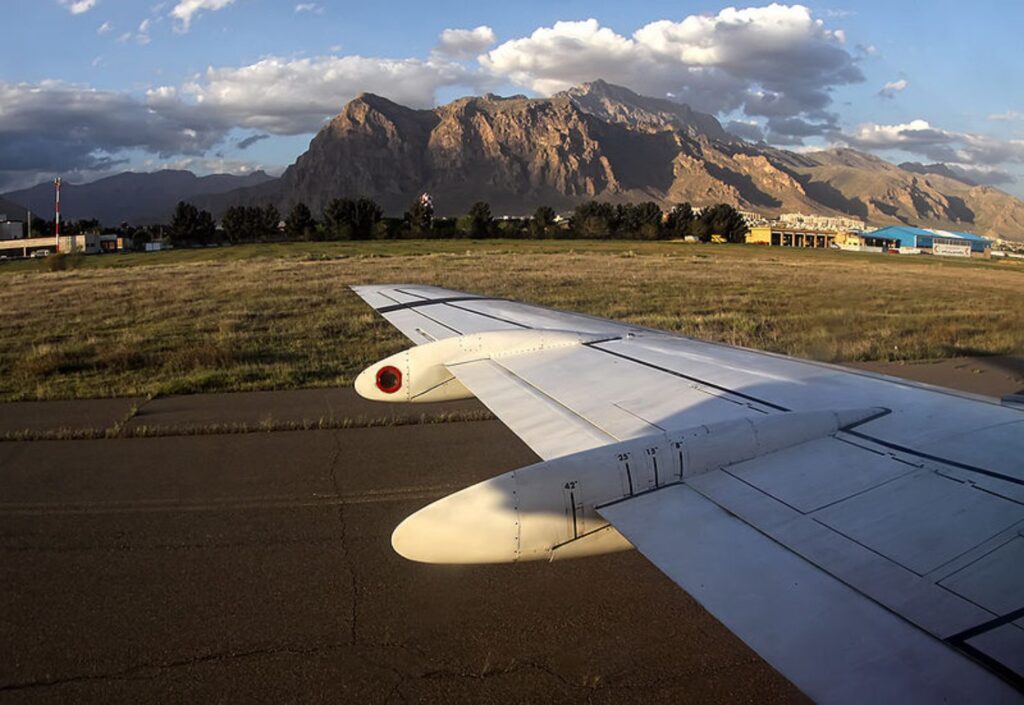
Located in the northeast of Kermanshah, Shahid Ashrafi International Airport spans 237 hectares of land. With its establishment dating back to 1350, this airport holds significant importance in the western region of the country. In addition to serving the local population, it also caters to the air transportation needs of neighboring provinces such as Kurdistan, Ilam, and Lorestan. Shahid Ashrafi Airport plays a crucial role as a transfer hub for pilgrims, particularly for the Highnesses, and offers Hajj flight services. As a result, it has gained recognition as one of the top 10 pilgrimage sites in Iran. This international airport comprises two terminals, one for domestic flights and the other for international flights.
Facilities
A variety of options are available at the airport, including souvenir stalls, a National Bank branch, a Bank Mellat currency counter, a coffee shop, a 24-hour taxi service, a restaurant, and a buffet.
For those looking to travel from the airport to the city, a taxi office is conveniently located next to the domestic terminal. This company offers 24-hour service and fares are calculated based on the taximeter. Special airport taxis are available for up to 4 passengers.
Terminals
Passengers can utilize minibuses, buses, and ride vehicles available at Shahid Kaviani Terminal, which is serviced by 13 passenger companies with cars that travel to various parts of the country. Additionally, the terminal is equipped with a central warehouse, mosque, prayer hall, parking lot, fuel station, and food store. The terminal is located on Shahid Kishori Boulevard, just short of Imam Khomeini Square.
Karbala Road Terminal, located on Karbala Road Boulevard, serves as a significant inter-city terminal. Another notable terminal in the region is Kermanshah, which acts as a transfer point for passengers traveling from various western cities within the province, as well as those coming from Iraq.
Public Transportation
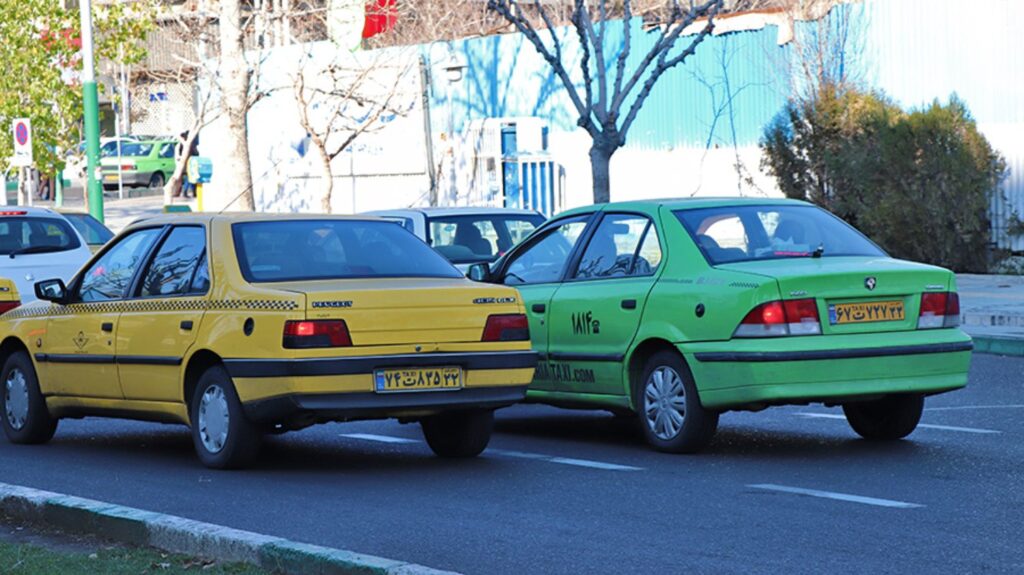
Public transportation within the city is not very developed in Kermanshah and taxis are the main vehicles to carry people.
There are two bus terminals in Kermanshah that serve people and passengers.
Until today, there has been no news about the construction of a subway in Kermanshah.
On May 12, 1386, the 14-kilometer-long Kermanshah rail line was approved by the Supreme Traffic Coordination Council, and on July 15, 1387, the Kermanshah Urban Train Organization was established. This urban train line includes 11 stations and connects Ferdowsi Square to Taq – e Bostan Square, which was supposed to be completed in five years.
In 2008, the construction of the Kermanshah urban train line was changed to a monorail, and it was decided that some parts of the track would be used underground and some parts would be used by air to transport passengers. In this way, the cost of implementing this project will be reduced by fifty percent. but it seems that the problem of non-implementation of the Kermanshah Monorail is more a management weakness than a lack of funding!
Accommodations in Kermanshah
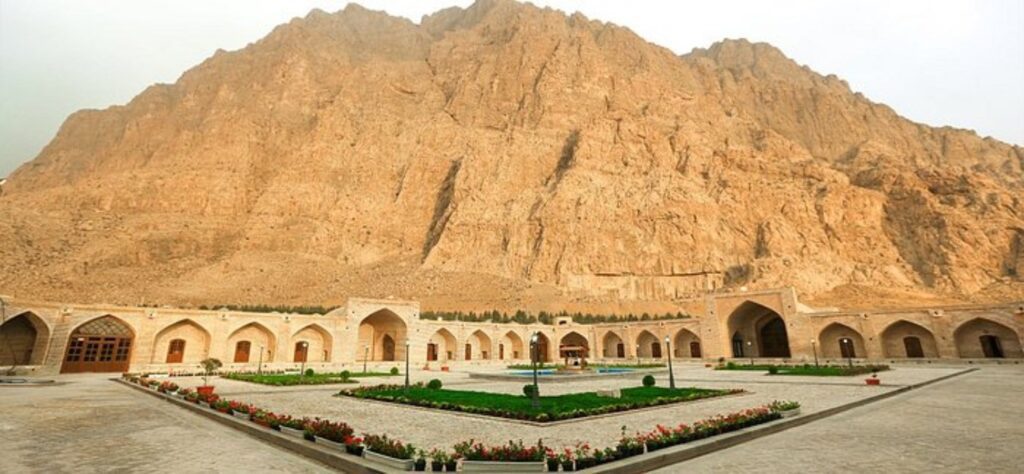
There are various options for accommodations in Kermanshah.
Lale Biston International Hotel, a 300-year-old caravanserai with traditional architecture, is situated at the base of the stunning Biston wall, 30 kilometers away from Kermanshah city.
Parsian Hotel is another excellent choice, particularly for business meetings, as it boasts top-notch facilities and is conveniently located near Kermanshah Airport.
Jamshid Hotel is another lodging option in Kermanshah, which is in close proximity to Ghori Qala Cave.
Additionally, the Eram Hotel in Paveh, Imam Reza Hotel (AS) in Qasr- e Shirin, and Kurd Hotel in Saqqez are ideal for those who intend to explore various cities in this province.
Also, the province boasts a variety of eco-residences in different cities, including Satyar – ساتیار, Henaz – ههناز, Darian Setare Gharb – داریان ستاره غرب, and Negin-e Horaman – نگینِ هورامان in Paveh.
Restaurants

If you have traveled to this province with the intention of trying the local cuisine of Kermanshah, such as Dande-Kebab and Khoresh-e Khalal, restaurants such as Heydari Restaurant in Taq- e Bostan, Chalcheleh Restaurant on Barq Street, and Shayli International Restaurant in Rafatieh, Kermanshah, are good choices. You can also try Ash Abbas Ali at Timche restaurant in Javanshir Square.
Handicrafts

In Kermanshah encompass a variety of skilled art forms, including carpet weaving, cotton weaving, Jajim weaving, and the creation of traditional instruments. Islamabad West is renowned for its handicrafts such as seven-color tiles, mosaic work, volume building, and stone cutting. In Dalaho city, knife making, metalworking, and the crafting of traditional instruments like Tambur and Setar are highly esteemed. Additionally, Paveh thrives in cloth weaving, textile production, and basket weaving.
Souvenirs

The sweets of Kermanshah are widely known as the most popular souvenirs of the region. In addition to these, there are other souvenirs such as rice bread, available in plain and saffron flavors, date bread, Kak, Kermanshahi animal oil, as well as rugs and Jajim.
Customs
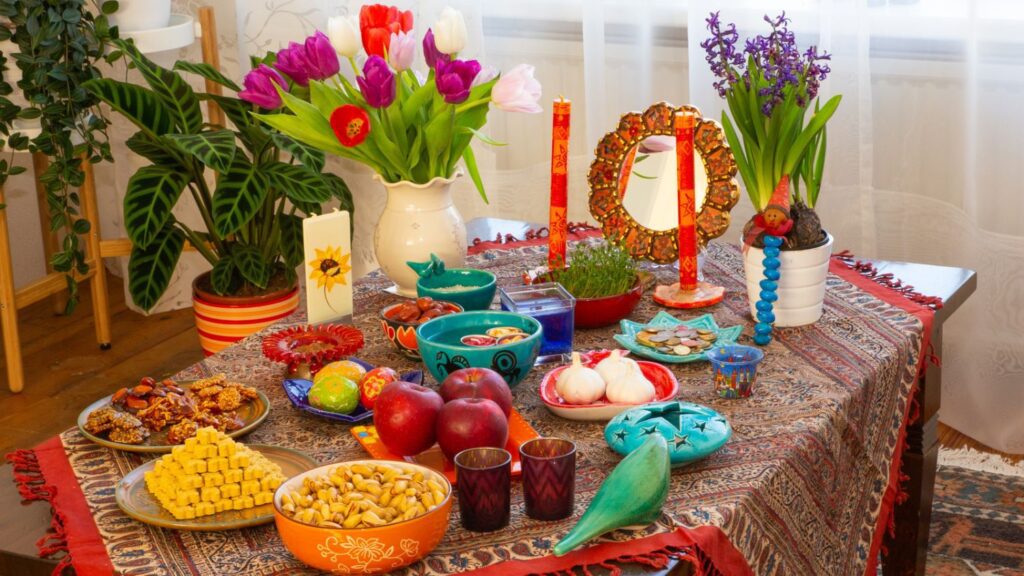
In Kermanshah province, there are various customs that hold great significance for the local people. One such custom is the celebration of Nowruz, which is highly cherished by the residents. This festive occasion involves shaking the house, lighting a fire, arranging the Haft Sin table, and preparing traditional sweets infused with the distinct flavor of Kermanshah oil to adorn the table. These customs are embraced by the people of Kermanshah as a warm welcome to the arrival of spring.
Additionally, the people of Kermanshah have a unique custom known as “New Arous” or “New Eid”. On the first day of spring, the groom’s family prepares a special gift for their newly engaged bride and visits the bride’s parent’s house to celebrate this joyous occasion. This tradition holds great significance and is a testament to the rich cultural heritage of Kermanshah province.

